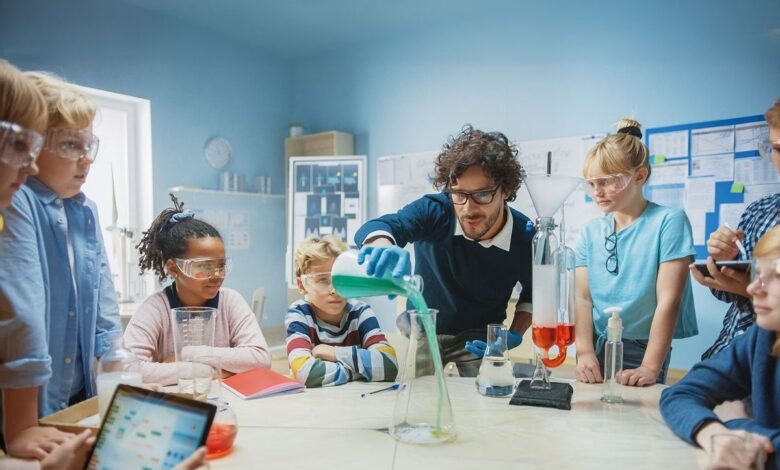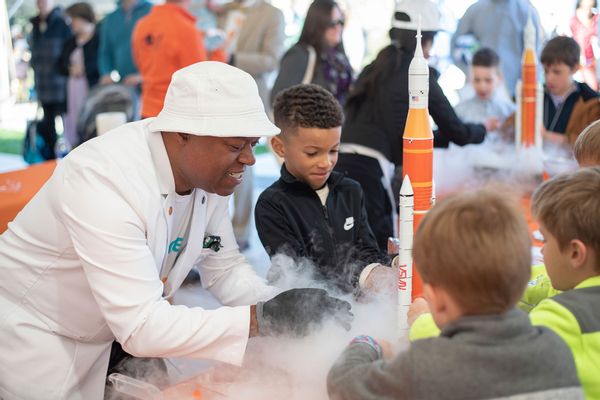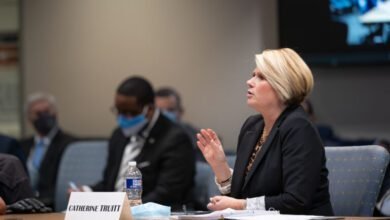Why restoring trust in science starts with art, history and education

For Dr. Frederic Bertley, there is a subtle connection between the seemingly disparate world. This connection supports both his own understanding of the sciences and his strategy as a communicator and educator of the same. Affectionately known as “Dr. B”, Bertley is the president and CEO of the Center for Science and Industry (COSI) in Columbus, Ohio, which is now celebrating its 60th anniversary as a physical museum in the heart of the country.
A Harvard-trained immunologist who spent his college days working on HIV and AIDS vaccines, recognition of Bertley’s leadership in science education extended to the White House and the rest of the world. In the midst of a growing American distrust in science – fueled by partisan rhetoric surrounding COVID-19 – Bertley’s approach to solving the problem of trust in science is radical common sense, with a Renaissance spirit.
In an interview with Salon, Bertley spoke about his and COSI’s roadmap to make scientific understanding more accessible to diverse groups. Bertley’s methods include connecting the arts and humanities with scientific communications aimed at the general public, reconstructing classroom practices, and harnessing the natural intelligence of each age to show people how much they already know about seemingly complex topics.

Let’s talk STEAM — science, technology, engineering, art and mathematics. Although the term is typically seen in youth education contexts, bringing the A into science communications appears to make science more accessible to experienced adults as well. For example, when culturally attuned media audiences come into contact with the hard sciences, there is often a disconnect that can be overcome with an arts-focused lens. How does the A in STEAM impact science accessibility on your side?
First thing: communication. You have to find a common vocabulary. So if you’re a plasma physicist or an organic chemist, you’re working on this weird little molecule that no one else understands. Excellent. This won’t work with the general public. Whether you have a university degree or a doctorate in history – you need to find a common vocabulary.
“For us, they are intimately linked. The best scientists have been completely creative.”
It is becoming fashionable now to move from STEM to STEAM. So you have a lot of people who are in that scientific STEM space who just add A’s because they want to get funding or for other reasons. Then you have the other side, people who are working harder to add STE because they want to say they are connected. And some people do it well, don’t get me wrong, but in general a lot of it is like, “Oh, polite wave at each other.” And we don’t approach it that way at COSI.
And why do we do science? Why do we have science and its cousin, engineering – and then do technology? 99.9% of the time it’s to improve the human condition, right? Harnessing fire so we can cook food and live longer, inventing medicines to save our loved ones and those devices we have in our pockets – is the effort to move humanity forward and bring us closer together. Well, nothing does that more than the arts.
Want more health and science stories in your inbox? Subscribe to Salon’s weekly Lab Notes newsletter.
That’s why you look at a Gauguin, a Matisse, a Basquiat. That’s why you want to understand fabrics and textures and colors, that’s why you study history. For us, they are intimately connected. The best scientists were completely creative, right? For us, STEAM is a real thing. This is how we navigate our universe. This is how we survive every day.
On the topic of COVID-19, we can say that it will obviously not be the last pandemic we have. And we’ve seen so many flaws exposed in the way science is communicated in journalism and the fast-paced media. But scientists and communicators now face an even greater deficit in public trust, heavily fueled by political disinformation campaigns among the anti-science crowd.
Scientific nihilism already existed before the pandemic, existing in any percentage in any society we looked at. But the pandemic just took this scientific nihilism and added rocket fuel to it. And the reason is that you’ve been through some strange times. We are coming out of the Black Lives Matter movements and other social movements are emerging. The pandemic shut down the world, things were difficult, maybe you lost your job so you’re not feeling well and things are getting politicized – it was literally a classic mix of unbelievable things that happened all at the same time.
“Scientific nihilism already existed before the pandemic… But the pandemic just added rocket fuel to it.”
So when you bring up politicization, people get angry because they link it to real life – and this has caused science denialism to rise from 5% to 15% of the population to almost 50%. Certainly across party lines, and even beyond that in other spaces.
But in general, the medical and scientific community hasn’t come out ahead and said, “Hey, new bug – we don’t understand it. We have no immunity to this. We are learning as we go. We will make mistakes. We won’t know for sure, but we promise that science is a process of accumulating data and getting closer to the truth.” We didn’t do that.
Can you talk to us about the way forward to create clearer, more useful scientific communications – and to engage the public, and even students, in a way that rebuilds trust?
Education is critical, but it has to be a consistently paced education… So how can we have a consistent pace around science and STEAM literacy? And so the bottom line is: we need to teach it better. We have to connect it to things that people can relate to.
So how do we teach all the intricacies of our beautiful natural universe? In ways that can connect people to vocabulary that they understand – to things that are meaningful to them and that will help them feel much more comfortable with science and therefore less afraid of those big black boxes of scientific data.
Read more
about distrust in science




